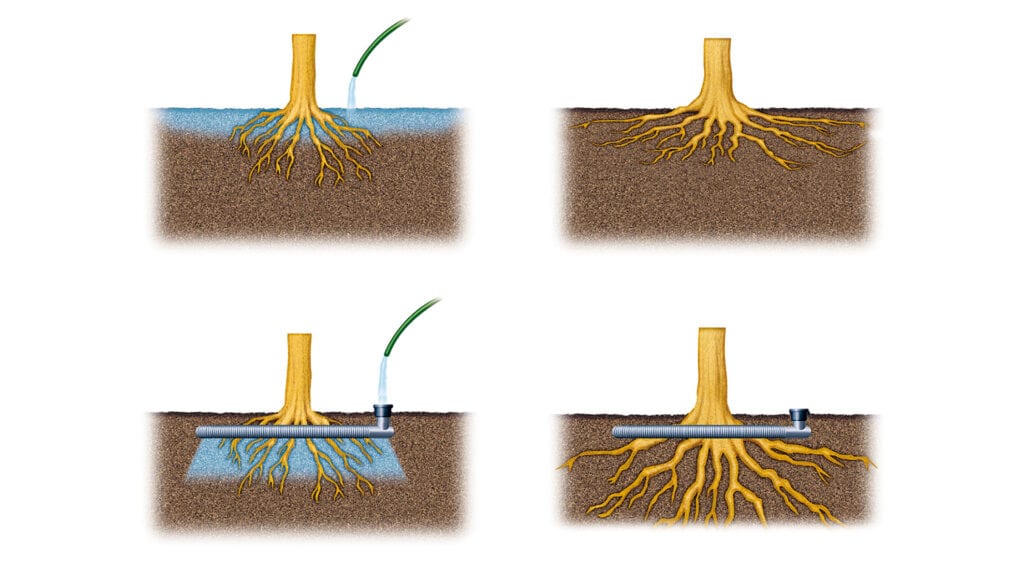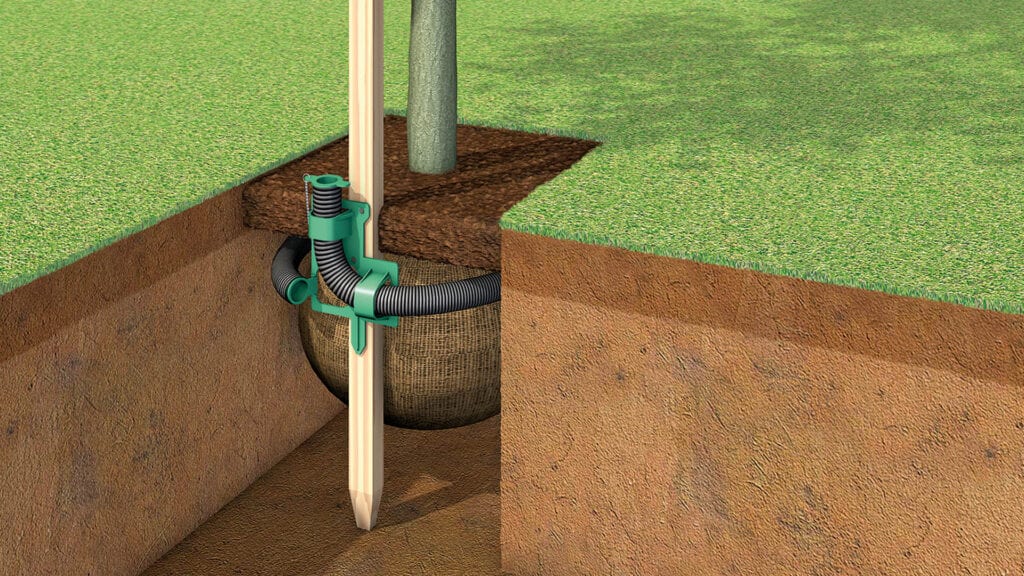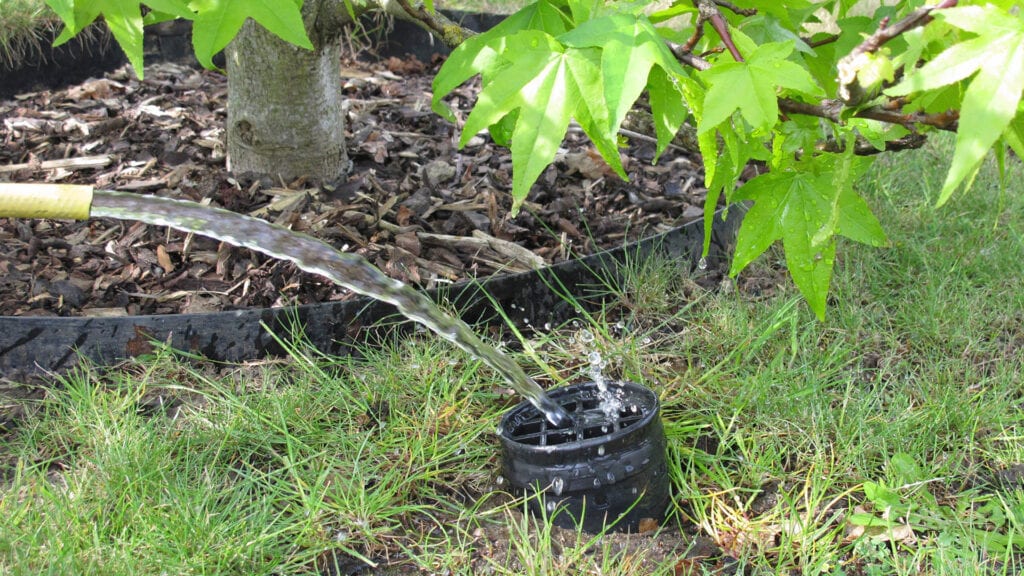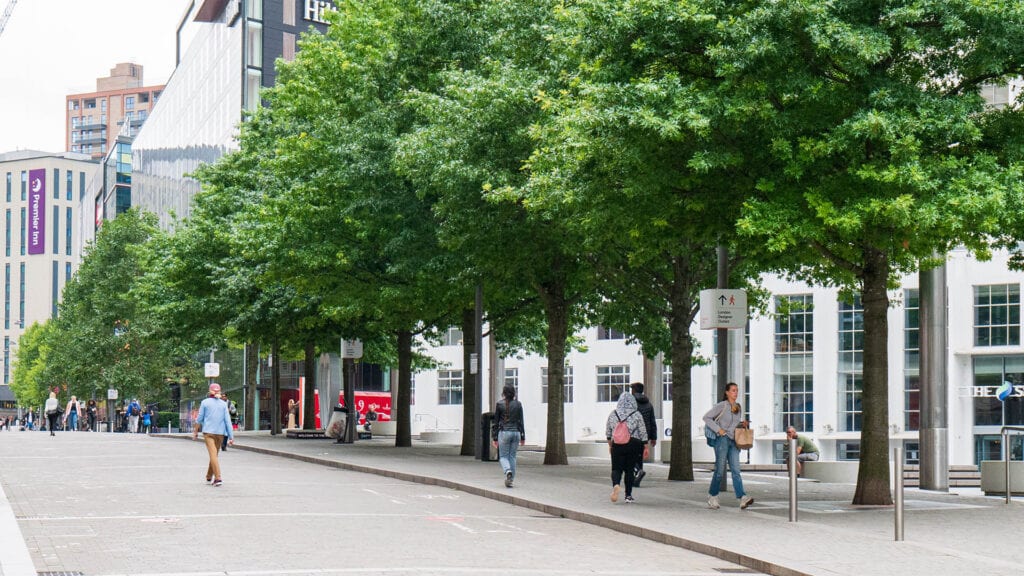It’s hard seeing something that you have planted die; many of us have experienced the disappointment of losing a house plant, but how much worse when the plant is a tree; a tree which has been carefully propagated, grafted, trained, formatively pruned and grown in a nursery? What about if we lose a number of trees on a site?
This was the story back in 1988. The founder of GreenBlue Urban, Dean Bowie, was in business as a commercial landscape contractor, with numerous successful schemes under his belt when an unusually hot and dry spell in the summer lead to a hosepipe ban – and the risk of hugely raised levels of tree mortality. Fortunately, a neighbouring water company was not under the same restrictions, so was able to supply a tanker full of water, and the trees were saved – but at a cost.

This set Dean Bowie thinking; most of the water that he had paid good money for had run off down the road because the dry soil conditions had created a clay pan surface, impermeable to water. Whilst providing a bark mulch cover can assist with water retention, it needs to be regularly topped up to be effective, and watering by hose tends to wash mulch away.
So how can we irrigate tree roots sub-surface without wasting water?
Dean prepared a questionnaire and handed it to colleagues within the landscape and arboriculture industry: is there a need for a manual tree irrigation product which is cheap to produce, simple to install and foolproof to use? It quickly became obvious that the whole industry was tired of wasting water without any guarantee that it was doing the trees any good. Even worse, evidence was building that surface watering encourages superficial rooting which in turn leads to long term drought intolerance and a likelihood of structural instability.
Although using a perforated pipe around the rootball was not a new idea, there was no proprietary product available which made installation simple, as the concept of a coil spiralling around the rootball was hopelessly inefficient – just delivering all of the water by helter-skelter to the base of the tree pit, inaccessible to new roots coming from the rootball.

The RootRain Metro was launched – a simple 35mm perforated pipe placed around the shoulder of the rootball fixed to a bracket which capped the far end of the pipe and held the top end in a position making it easy to fill. The Metro was offered with a choice of top caps, plastic, with a chain or metal, designed to help prevent ingress by debris and rodents. Offering up to 60 litres per minute irrigation, the Metro was the irrigation offering of choice by landscape architects, local authorities and contractors alike, and tree mortality rates started to fall.
Realising that whilst the Metro was a fantastic product for smaller trees, heavy standard and semi-mature trees needed a larger system, and the RootRain Urban and Civic systems were released. With up to 100 litres of water per minute directed to the growing roots, these systems became hugely popular, and with integral debris grid preventing blockages, are seen across the globe in numerous landscape projects.

Innovation continued with a range of irrigation inlets suited for installation in hard paving and tree grilles, and an increased understanding of the need for gaseous exchange and aeration led to additional designs and sizes to maximise the efficiency of the system. With ArborVents (square) and Hydro Grilles (circle) offering aluminium grilles at paving level, every paving finish was now catered for, including some special options, such as solid brass for the Selfridges scheme in central London. For larger tree pits, the Arborvent 150 was introduced and thousands have been installed around the world, guaranteeing efficient aeration and healthy soil below ground.

To resolve the ever-present issue of blockages in the aeration and irrigation inlets, GreenBlue Urban now supply all inlets with an atomising in-line filter and extraction hook. This makes clearing of the inlets simple and minimises soil erosion within the soil cells.

With increasing tree planting on podium decks and other zones where water is not readily available, long term forced irrigation will be necessary long term. Surface irrigation such as leaky hose systems or irrigation fountains do not really benefit trees, and so GreenBlue Urban now supply the Auto-Irrigation Adaptor to enable the RootRain to connect with most of the proprietary forced irrigation systems available around the world. This system combines the advantages of both systems with the downsides of neither; yet again, innovating to maximise tree life and the consequent benefits for all.
The full ArborSystem specification guide is available to download here.

